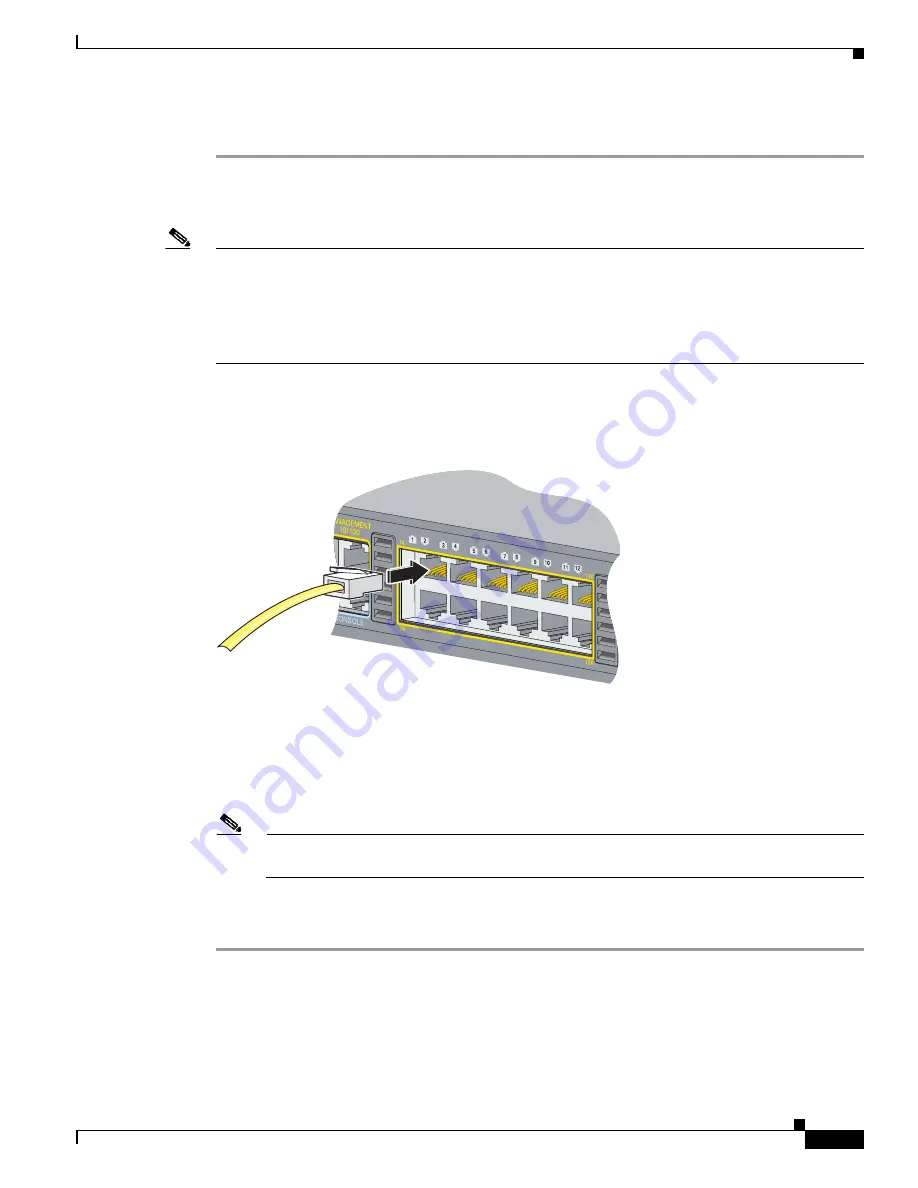
2-23
Cisco ME 3400E Ethernet Access Switch Hardware Installation Guide
OL-16447-01
Chapter 2 Switch Installation
Connecting to the 10/100 and 10/100/1000 Ports
Follow these steps to connect to 10BASE-T, 100BASE-TX, or 1000-BASE-T devices:
Step 1
When connecting to workstations, servers, and routers, connect a straight-through cable to an RJ-45
connector on the front panel. (See
Figure 2-21
.) When connecting to switches or repeaters, use a
crossover cable. (See the
“Cables and Adapters” section on page B-4
for cable-pinout descriptions.)
Note
You can use the
mdix auto
interface configuration command in the CLI to enable the automatic
medium-dependent interface crossover (auto-MDIX) feature. The switch then detects the required cable
type for copper Ethernet connections and configures the interfaces accordingly. Therefore, you can use
either a crossover or a straight-through cable for connections to a copper 10/100, 10/100/1000, or
1000BASE-T SFP module port on the switch, regardless of the type of device on the other end of the
connection.
Step 2
Connect the other end of the cable to an RJ-45 connector on the other device. The port LED turns on
when both devices have established link. (See
Figure 2-21
.)
Figure 2-21
Connecting to an Ethernet Port
The port LED is amber while Spanning Tree Protocol (STP) discovers the topology and searches for
loops. This takes about 30 seconds, and then the port LED turns green. If the port LED does not turn on,
the device at the other end might not be turned on, or there might be a cable problem or a problem with
the adapter installed in the attached device. See
Chapter 4, “Troubleshooting,”
for solutions to cabling
problems.
Note
On user network interface (UNI) ports, the port LED is green after the link is established. It does
not turn amber because STP is not supported.
Step 3
Reconfigure and reboot the connected device, if necessary.
Step 4
Repeat Steps 1 through 3 to connect each device.
280848






























